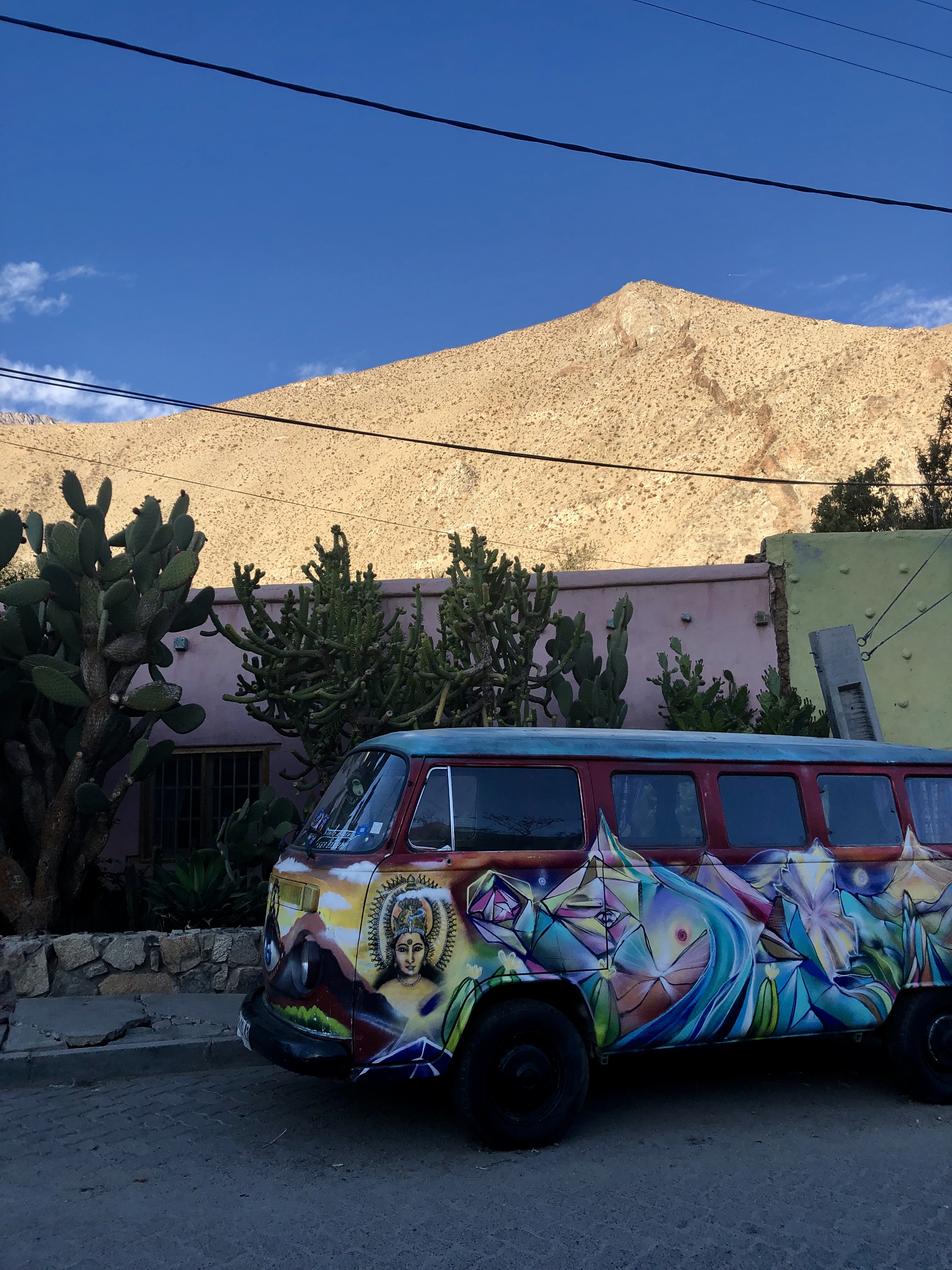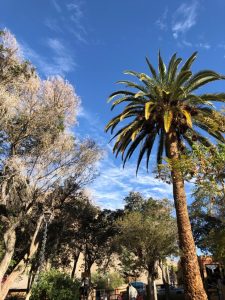Light Pollution in the Elqui Valley
This weekend, I had the opportunity to go on a trip to La Serena in northern Chile thanks to my internship with the British Council. The flight from Santiago is 50 minutes long, and we were barely in the air before it was time to land, but the town is vastly different from Santiago. Low rise buildings painted dusty reds and yellows form the old town, which has now sprawled towards the sea and the iconic La Serena lighthouse. My role was to accompany a British Council speaker (as she doesn’t speak Spanish) to a conference in La Serena on education and teaching English. It was fascinating for me as a language learner (and in the past, English tutor) to hear more about the techniques and strategies for teaching English as a foreign language.
I decided to stay in the area after the conference ended, and on Saturday morning caught a 2.5-hour bus into the Elqui Valley. The tiny bus takes you into the mountains of the valley, where speed limits don’t seem to exist, through a landscape of lakes, craggy mountains and vineyards. We stayed in the tiny, sleepy town of Pisco Elqui, which is famously the home of the Chilean spirit Pisco. Chile and Peru have a long-standing debate about who created Pisco, and Chile changed the name of this town from La Greda in 1936 to reinforce its claim to the drink. We visited a distillery to learn about the process of making pisco, and tried several flavoured pisco sours, the national drink of Chile.
The Elqui Valley is also famous for its reliably clear night skies and is the world’s first International Dark Sky Sanctuary. It was the best place to see the July 2019 eclipse, and La Serena was filled with tourists looking to experience this wonder. As a Londoner, used to light polluted skies with not a star in sight, I was blown away by the stars. By 2020, it is estimated that the valley will have 70% of the world’s astronomy infrastructure. However, the region faces a common problem: as tourism to the region increases, the more threat there is to the nature that draws tourists in the first place. It was for this reason that the region was declared a sanctuary, and the Chilean government is prioritising protecting the dark skies of northern Chile through regulation and education, so that their natural beauty can continue to be appreciated rather than ruined by increasing light pollution. It was certainly a darkness unlike I’ve ever experienced before, so I’m glad to see that on both a local and national level measures are being taken to protect the region’s natural resources.

Contaminación lumínica en Valle del Elqui
Este fin de semana, tuve la oportunidad de viajar a La Serena, en el ‘norte chico’ de Chile, gracias a mis prácticas en el Consejo británico. El vuelo desde Santiago dura solo unos 50 minutos, y apenas estábamos en el aire antes de que llegara el momento de aterrizar, pero la ciudad es muy distinta a Santiago. Edificios bajos pintados de rojos y amarillos polvorientos forman la ciudad original, que ahora se ha extendido hacia el mar y al faro emblemático de La Serena. Mi trabajo consistía en acompañar a la oradora que el Consejo británico había enviado a una conferencia sobre educación y la enseñanza de inglés (ya que ella no hablaba español). Para mi, como estudiante de idiomas (y en el pasado, tutora de inglés), fue fascinante aprender sobre las técnicas y estrategias para enseñar inglés como lengua extranjera.

Decidí quedarme en la zona después de que terminó la conferencia, y el sábado por la mañana tomé un bus hacia el Valle del Elqui. El bus me llevó hacía las montañas del valle, donde parece que los límites de velocidad no existen, por un paisaje de lagos, montañas escarpadas, y viñas. Nos alojamos en el pueblo minúsculo y tranquilo de Pisco Elqui, que es conocido por ser la cuna del licor chileno, pisco. Chile y Perú tienen un antiguo debate sobre quién creó el pisco, y Chile cambió el nombre de este pueblo, anteriormente conocido como La Greda, en 1936 para reafirmar su derecho sobre la bebida. Visitamos una destilería para conocer el proceso de elaboración del pisco y probamos varios piscos sours saboreados (la bebida nacional de Chile).
El Valle del Elqui también tiene fama debido a sus cielos casi siempre despejados, y es el primer Santuario Internacional de Cielo Oscuro del mundo. Fue el mejor sitio para observar el eclipso de julio 2019, y La Serena se llenó de turistas buscando la mejor vista de esta maravilla. Como londinense, acostumbrada a cielos contaminados por la luz, donde no se puede ver ni una estrella, las estrellas me parecieron increíbles. Se estima que en 2020 el valle tendrá el 70% de la infraestructura mundial de astronomía. Sin embargo, la región se encuentra frente a un problema común; mientras crezca el turismo a la región, más amenaza hay a la naturaleza que atrae a los turistas en primer lugar. Fue por esta razón que la región se declaró un santuario, y el gobierno chileno prioriza la protección de los cielos oscuros del norte de Chile con regulación y educación, para que su belleza natural pueda ser apreciada y no arruinada por el aumento de la contaminación lumínica. Fue una oscuridad como nunca antes había visto, y me alegra ver que, tanto a nivel local como nacional, Chile está tomando medidas para proteger los recursos naturales de la zona.
